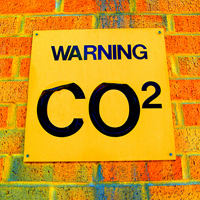Camille Serre (Sciences Po), Emmanuel Guérin (IDDRI), Alexander Ochs (Worldwatch) 
Working Paper published by IDDRI, Worldwatch Institute & SciencePo, December 2011, http://www.iddri.org/Publications/Collections/Idees-pour-le-debat/WP%201511_CS%20EG%20AO_US%20EPA%20regulations.pdf
ALTERNATIVES TO THE LEGISLATIVE DEADLOCK?
The United States finds itself in a schizophrenic situation: its domestic climate policy has clearly been in a stalemate since the Congress failed to adopt comprehensive climate and energy legislation in 2010. On the other hand, U.S. delegates confirmed the target of reducing greenhouse gas (GHG) emissions by 17% by 2020 compared to 2005 levels at the Cancún UN climate summit in December 2010. How then will the U.S. fulfill its international obligations without being able to reach a consensus at home? While climate policies at state and regional levels show some encouraging signs, the extent to which the diffusion of climate initiatives across states could gain momentum is still uncertain.
THE EPA’S AMBITIONS AND STANDARDS
Shifting back from a market-based approach to a command-and-control approach, the Environmental Protection Agency’s (EPA) regulations seem to be the only viable improvement at the federal level. The EPA set exante GHG emissions standards for a given pollutant by industry sector, based on available and cost-efficient technologies. And it also provides not directly GHG-related regulations which could indirectly help the U.S. curb its GHG emissions trajectory.
THE EPA’S LIMITS OF ACTION
Yet, in a highly politicized context, EPA regulations are only a second best option, which cannot make up for comprehensive Congress-adopted climate policy in the long-run: it is doubtful that they can alone manage to trigger a relevant infrastructure change. Technological and emissions standards are one piece of the required policy mix, and should be backed up by complementary policies. But in the current tense, partisan and unpredictable context, no clear investment signals can be sent to shift to a low-carbon economy.
[Find the whole paper HERE]

